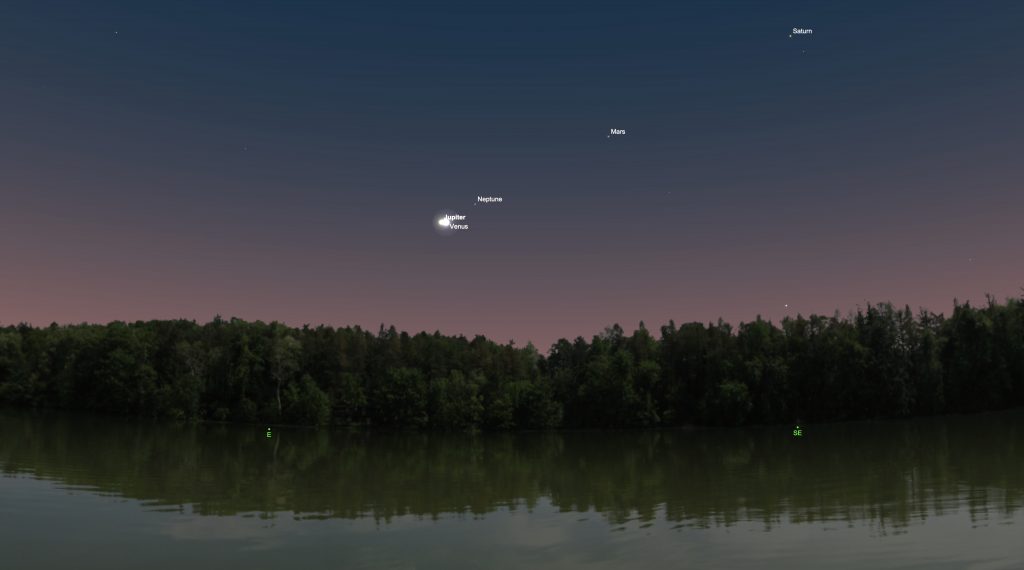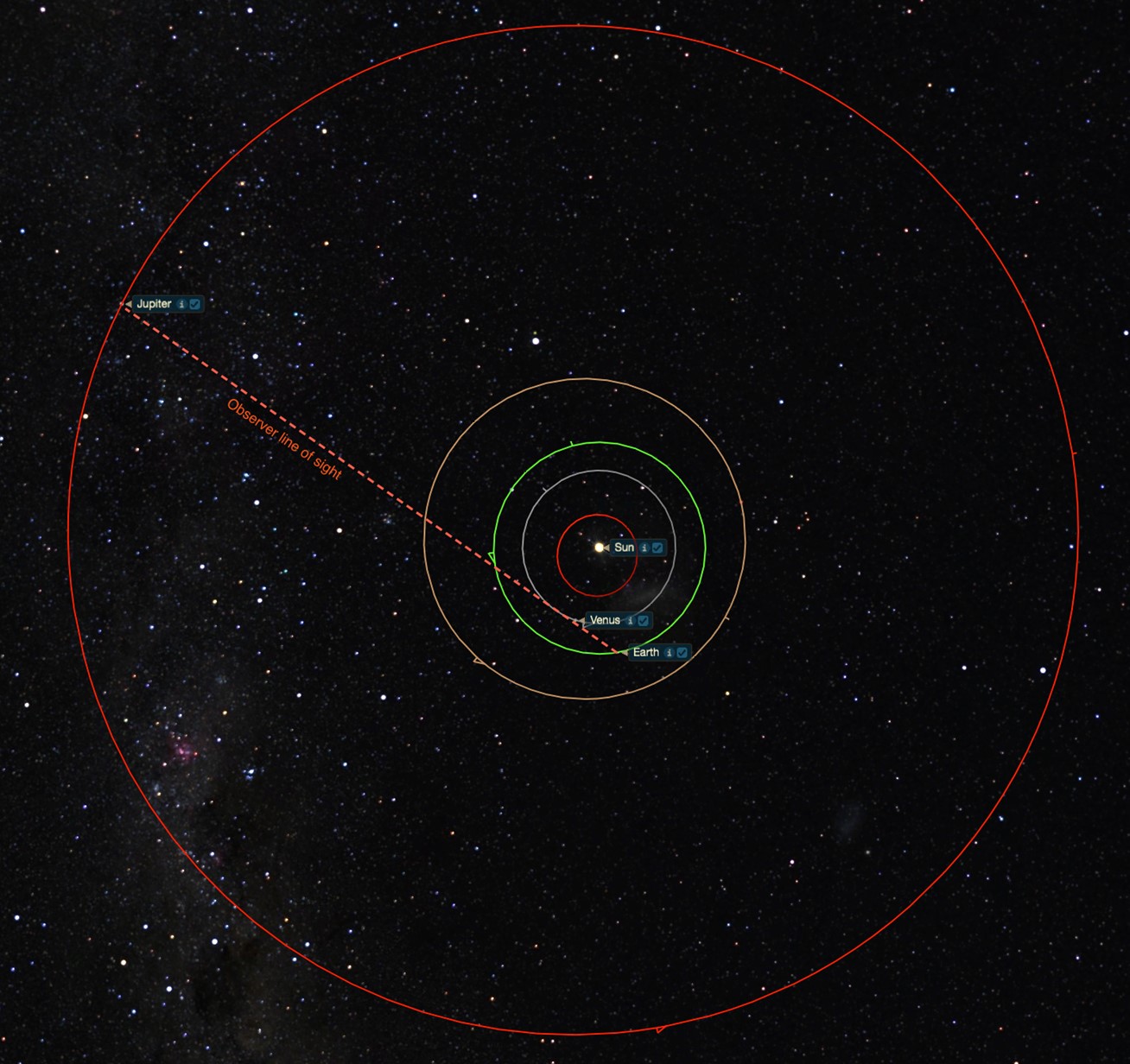Skywatchers, you have the opportunity to see not just one, but two planetary conjunctions during the month of April 2022!
A conjunction is a celestial event in which two planets, a planet and the Moon, or a planet and a star appear close together in Earth’s night sky. Conjunctions have no profound astronomical significance, but they are nice to view. In our Solar System, conjunctions occur frequently between planets because the planets orbit around the Sun in approximately the same plane – the ecliptic plane – and thus trace similar paths across our sky.
The first planetary meet up occurs on the mornings of April 4 and 5 before sunrise and includes Mars and Saturn, with Saturn being the brightest. These two planets will come together, appearing as almost a single point of light. However, if you grab your binoculars, you’ll easily see the scene with the planets switching positions on each morning.

We will also see a bright Jupiter ascend quickly in the morning twilight, heading towards Venus in the final week of April. Catch a great view of the planets on the morning of April 27, which will include a waxing Moon.
Jupiter and Venus will then meet in conjunction during the morning of April 30 – appearing to nearly collide into each other. Due to the glare from both planets, observers will see them merge into one very bright, spectacular glow!

Venus’s orbit is closer to the Sun than the Earth’s, and Jupiter’s orbit is much farther away, so the proximity is an illusion, occurring only because Earth, Venus, and Jupiter happen to be approximately aligned. This celestial event will continue on the morning of May 1, but the positions of the planets, Jupiter and Venus, will be reversed.
If you want to know what else is in the sky for April, check out the latest “What’s Up” video from Jet Propulsion Laboratory:
Enjoy all this month has to offer as you watch the skies!
by Lance D. Davis


